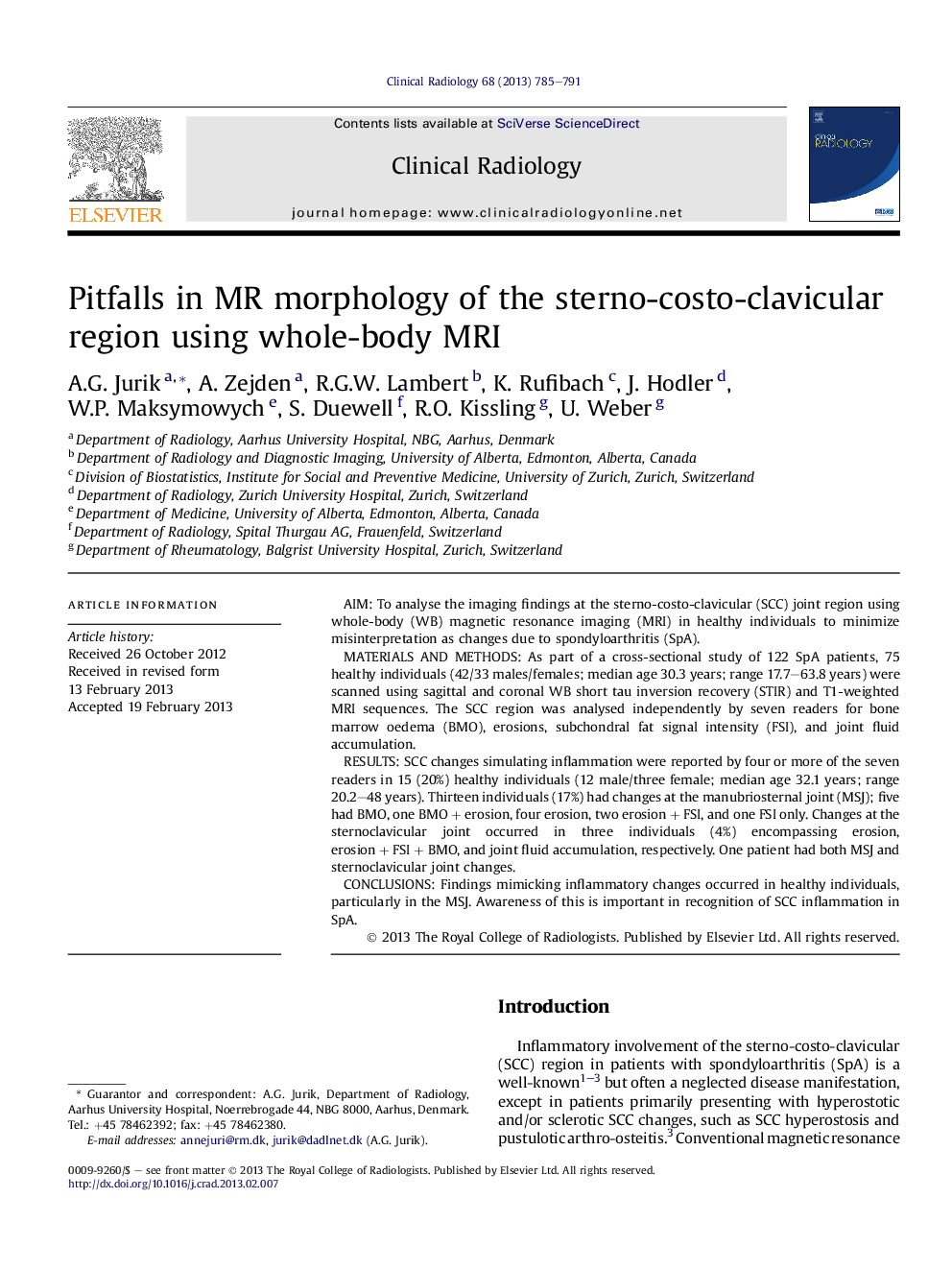| Article ID | Journal | Published Year | Pages | File Type |
|---|---|---|---|---|
| 6190901 | Clinical Radiology | 2013 | 7 Pages |
AimTo analyse the imaging findings at the sterno-costo-clavicular (SCC) joint region using whole-body (WB) magnetic resonance imaging (MRI) in healthy individuals to minimize misinterpretation as changes due to spondyloarthritis (SpA).Materials and methodsAs part of a cross-sectional study of 122 SpA patients, 75 healthy individuals (42/33 males/females; median age 30.3 years; range 17.7-63.8 years) were scanned using sagittal and coronal WB short tau inversion recovery (STIR) and T1-weighted MRI sequences. The SCC region was analysed independently by seven readers for bone marrow oedema (BMO), erosions, subchondral fat signal intensity (FSI), and joint fluid accumulation.ResultsSCC changes simulating inflammation were reported by four or more of the seven readers in 15 (20%) healthy individuals (12 male/three female; median age 32.1 years; range 20.2-48 years). Thirteen individuals (17%) had changes at the manubriosternal joint (MSJ); five had BMO, one BMO + erosion, four erosion, two erosion + FSI, and one FSI only. Changes at the sternoclavicular joint occurred in three individuals (4%) encompassing erosion, erosion + FSI + BMO, and joint fluid accumulation, respectively. One patient had both MSJ and sternoclavicular joint changes.ConclusionsFindings mimicking inflammatory changes occurred in healthy individuals, particularly in the MSJ. Awareness of this is important in recognition of SCC inflammation in SpA.
